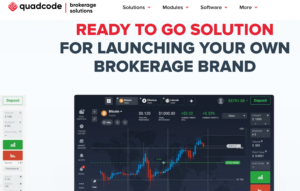PFOF: Citadel Securities – Robinhood model slammed by Public
The short squeeze lawsuit may be going in favor of Citadel Securities and Robinhood, but that doesn’t the PFOF model is not at the end of the road. Most countries have already banned it outright. It might be a question of time for the US to do the same.

Following the infamous short squeeze of January 2021, Public.com decided to end its participation in payment for order flow (“PFOF”), the model that raised scandal among retail investors and even several lawsuits, including the Short Squeeze Trading Litigation.
Public.com is a stock trading platform that rivals Robinhood and is now throwing stones at the PFOF model as well as claiming it has achieved “better execution quality on average to customers” than competitors that rely on PFOF from market makers, such as the relationship between Robinhood and Citadel Securities.
PFOF with worst prices for retail investors
As to effective spread over quoted spread (EFQ), Robinhood stood at 44.79% while Public.com achieved 32.88%, demonstrating better execution quality. The impacts of other metrics, like AOB and Price Improvement, are naturally reflected in EFQ.
As to net price improvement – measured by taking the gross price improvement per share and subtracting any executions that slip outside of NBBO, then averaging that across all shares traded – Public.com also outmatches Robinhood: $1.18 against $1.72.
Public.com arrived at the conclusion that rejecting the PFOF model resulted in better price execution. “Looking at the data across EFQ, AOB, and price improvement per share, it’s clear that quality price execution is possible without routing to market makers in exchange for PFOF. Public’s price execution on the most comprehensive and important metric, EFQ, is better than our peers and is comparable, if not better, across the other metrics”, said Stephen Sikes, Chief Operating Officer at Public.
A Bloomberg Intelligence reported the spread between the midpoint and the best bid or offer on retail investing orders in the second quarter of 2021. The spread was divided as follows:
49% went to market makers in the form of trading revenue
13% went to brokers in the form of PFOF
38% went to retail investors in the form of price improvement
The more value or share of the spread that goes to brokers and market makers, the less room there is for price improvement for customers, Sikes continued, adding that Public’s model delivers more value to customers than PFOF.
Stephen Sikes explained both the PFOF model and Public’s, pointing the reasons why the latter is better.
“Most retail brokers route their customer orders to a small number of market makers, who pay the broker PFOF in exchange for order flow.
“So, when a customer submits an order to the broker, the broker assigns that order to a predetermined market maker, without checking the broader market for a better price”.
To sum it up, “every dollar they deliver in extra price improvement is a dollar less they earn on that trade, so their incentives are to deliver a price that is just good enough to retain the contract with the broker, but may not be as good as other pricing that is available in the market.”
Public accounts for gap of National Best Bid and Offer (NBBO)
Public’s model accounts for NBBO’s limitations, which only captures 50% to 60% of the pricing available in the market, and particularly for orders of less than 100 shares, there are better prices available in the market than what is captured by NBBO.
The trading platform works with Apex Clearing, Instinet and the execution venues, and locates the best price for each order available across 28 different lit exchanges and alternative trading systems (“ATSs”). Smart order routing does the rest, including scanning venues that are often not included in NBBO, including retail-specific lit venues and ATS.
“We currently execute across 28 different venues and execute 70–75% of our shares on lit exchanges. We execute the remainder on ATS, almost entirely in cases when we are able to find a midpoint execution that is better than we’d find on the lit exchanges”, Sikes explained.
The short squeeze lawsuit may be going in favor of Citadel Securities and Robinhood, but that doesn’t the PFOF model is not at the end of the road. Most countries have already banned it outright. It might be a question of time for the US to do the same.









